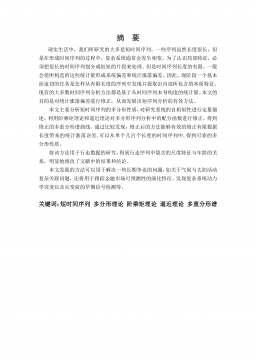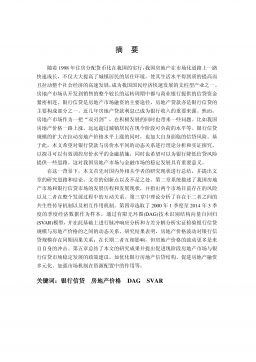纳米化合物Cu2ZnSnS4的新型非真空制备方法与特性研究
VIP免费
摘 要
I2-II-IV-VI4族纳米化合物 Cu2ZnSnS4 (CZTS) 因具备优异的光学特性 (如:高
的光学吸收系数 (>104 cm-1)、理想的光学带隙值 (~1.5 eV) 等),被广泛研究并作
为光吸收层材料应用于薄膜太阳能电池。另外,更值得注意的是其所含成分在地
壳中含量丰富 (Cu: 50 ppm、Zn: 75 ppm、Sn: 2.2 ppm、S: 260 ppm),价格低廉且
环境友好,有效克服了常见 CIGS、CdTe 化合物电池使用稀有、昂贵、有毒元素的
不足 (In: 0.05 ppm、Te: 0.01 ppm,Cd 为剧毒元素),因此 CZTS 薄膜电池被认为
是最有发展前景的下一代廉价太阳能电池,备受业内关注。
CZTS 材料作为薄膜太阳能电池的吸收层,是整个电池的核心,其制备技术的
优劣直接影响电池的性能和生产成本。为获得高性能的 CZTS 薄膜材料,采用了
各种技术,主要可分为真空和非真空两类。在早期的研究中,以真空技术为主,
但真空技术设备投资大、生产效率低、材料利用率低 (约50%),增加了太阳能电
池的制备成本,不利于大面积商业化生产。2010 年,Todorov 等人首次采用非真空
的联氨溶液法获得效率为 9.66%的CZTS 体系薄膜电池,空前激起了研究人员对非
真空技术制备 CZTS 材料的研究热情。目前,非真空技术呈现多元化的发展趋势,
主要可分为基于 CZTS纳米晶 (或纳米颗粒) 的涂覆成膜技术和基于溶液的直接成
膜技术两大类。针对目前常见非真空制备技术存在的不足,本文逐步展开深入研
究,创新地引入或提出一些新方法应用于 CZTS 材料的制备,包括一锅法、煅烧
法和基于金属盐前驱体的直接印刷成膜技术,另外文中对喷涂法亦进行了研究。
以期在本文工作的基础上,实现 CZTS 材料的高质量、低成本、简易化及规模化
制备,具体工作介绍可见于下文。
1) CZTS 纳米晶的合成是基于 CZTS 纳米晶的涂覆成膜技术的核心,文中为
解决目前纳米晶合成技术存在工艺复杂、周期长、不易规模化的不足,首次将一
锅法引入 CZTS 纳米晶的合成,详细探讨了合成温度和时间对样品各项性能的影
响规律,同时剖析了此方法中纳米晶的形成机理。研究结果表明,最优合成环境
参数为 (250 ℃, 1 h),此 条件下所制样品呈锌黄锡矿结构,化学组成为:Zn/Sn=0.81、
Cu/(Zn+Sn)=0.97、S/(Cu+Zn+Sn)=1.07,纳米晶平均尺寸为~19.98 nm,团聚颗粒大
小为 200~500 nm,光学带隙值为~1.5 eV,整体性能较优,可用于 CZTS 薄膜的制
备。印刷技术因具备设备简单、材料利用率高、可实现卷对卷高效大面积生产等
优点,备受业内青睐,因此本文中利用其将上述纳米晶制备成膜。
2) 为克服常规溶液合成技术需使用昂贵且具一定毒性的有机试剂,以及使用
复杂设备以提供保护气体或高压环境的缺点,提出一种低温常压的煅烧技术应用
于纳米晶合成,探讨了此技术的理论可行性,并施以实验验证。研究结果表明,
在 (250 ℃, 1 h) 的合成环境下,所制纳米晶为锌黄锡矿结构,化学组成为:
Zn/Sn=1.10、Cu/(Zn+Sn)=1.03、S/(Cu+Zn+Sn)=0.9,形貌呈不规则球形状 (尺寸为
~10 nm),光学带隙值为~1.4 eV (与理想值接近),样品性能优异,适合用于薄膜的
制备。亦采用印刷技术将所合成的纳米晶制备成膜。
3) 尽管纳米晶的合成为常见基于 CZTS 纳米晶印刷成膜技术的核心,但其往
往会增加 CZTS 薄膜制备工艺的复杂性和生产周期。为克服上述不足,文中提出
一种基于金属盐前驱体的直接印刷成膜技术,其可归类于基于溶液的直接成膜技
术。此技术无需 CZTS 纳米晶的合成,直接在印刷环节即可实现对薄膜性能的调
节和控制,有利于薄膜制备工艺的简化与周期的缩短,同时亦可解决常见基于溶
液的直接成膜技术所存在的不足,有效实现对薄膜化学组成和均匀性的控制,并
避免有毒试剂的使用。文中对此方法的制备机理进行了深入的分析,并结合实验
进行验证,同时发现 Cu 含量的调节可实现薄膜表面形貌的改善。
4) 另外,文中采用两步沉积方案:1) 低温衬底沉积;2) 高温硫化退火,对
喷涂技术在 CZTS 薄膜制备上的应用亦进行了研究,调节制备参数,优化样品性
能,并发现 Mn 掺杂会使薄膜的光学带隙发生“蓝移”。
5) 首次结合可实现快速升降温的快速退火技术 (RTA) 对上述四种方法所制
备的薄膜样品进行硫化退火处理,详细探讨退火环境 (温度、时间) 对样品性能
(如物相、形貌、光学特性和化学组成等) 的影响规律。研究发现 RTA 技术可以有
效改善样品的结晶度、调节化学组成、优化形貌和光学特性。以一锅法和煅烧法
合成的 CZTS 纳米晶为原料所制备的薄膜的优化退火环境参数均为 (600 ℃, 20
min),基于金属盐前驱体的直接印刷成膜技术和喷涂法所制备样品的优化环境参数
均为 (600 ℃, 45 min)。但仍有部分问题需进行进一步的研究改善,如孔洞问题、
退火效率较低等。
关键词:铜锌锡硫 一锅法 煅烧 印刷 喷涂 快速退火 硫化 薄膜太阳
能电池
ABSTRACT
I2-II-IV-VI4 nano-compound Cu2ZnSnS4 (CZTS) has been extensively investigated
as the light absorption material for the thin film solar cells (TFSCs), due to its excellent
optical properties (such as high absorption coefficient (>104 cm-1), optimal band gap
energy of ~1.5 eV). Furthermore, all the constituent elements of CZTS are naturally
aboudant (Cu: 50 ppm, Zn: 75 ppm, Sn: 2.2 ppm, S: 260 ppm), cheap, and friendly to
the environment. In contrast to the well-known compounds CIGS and CdTe, CZTS
avoids using the rare, expensive, and toxic elements (In: 0.05 ppm, Te: 0.01ppm; Cd is
toxic). Therefore, the CZTS TFSCs have attracted increasing attention, and have been
comfired as one of the most promising next-generation low-cost solar cells.
As the absorption layer of the TFSCs, CZTS material is the core of the cell. So the
performance of CZTS fabrication technology directly influences the properties and cost
of the cell. Aiming to obtain the high-quality CZTS material, various technologies have
been developed. All these technologies could be classified as vacuum-based process and
non-vacuum-based process. In the early research works, the common fabrication
technologies for CZTS material were based on vacuum process. However, the vacuum
techniques have many shortages, such as high investment in equipment, low production
rate and low material utilization efficiency (~50%), which increase the manufacturing
cost of solar cells and limit the commercial scale-up production. In 2010, Todorov et al.
employed the non-vacuum hydrazine solution route to prepare the CZTS material for
the first time, and the obtained cell had a coversion efficiency of 9.66%. Thence, the
research enthusiasm of non-vacuum technologies for the CZTS fabrication has been
spurred broadly by above work. At present, the non-vacuum technologies feature as a
diversified development trend, and could be sorted as two types: 1) CZTS nanocrystals
(NCs)-based (or nanoparticles (NPs)-based) coating route; 2) direct solution-based
coating route. In present thesis, several novel approaches (one-pot route, calcination
route and metal-salt precursor printing route), aiming to overcome the disadvantages of
the current non-vacuum methods, were developed for the CZTS fabrication. Meanwhile,
the spray method was also investigated in present work. The purpose of present thesis is
to realize the high-quality, low-cost, facile and large-scale fabrication for the CZTS
material. And the detailed investigations are shown as follows.
1) The synthesis of CZTS NCs is the key step in the NCs-based coating route. In
order to overcome the disadvantages (complex process, long time, difficulty in scale-up
production) in common synthesis methods, one-pot route was employed for the
synthesis of CZTS NCs for the first time in present paper. The influences of reaction
temperature and time on the properties of as-synthesized NCs were firstly studied in
detail, and then the possible formation mechanism of CZTS NCs in one-pot route was
also investigated. The characterization results of the as-obtained NCs, under the optimal
synthesis condition (250 ℃, 1 h), were shown as following: the as-synthesized NCs
were kesterite structure; the chemical composition was Zn/Sn=0.81, Cu/(Zn+Sn)=0.97,
S/(Cu+Zn+Sn)=1.07; the average size of the NCs was ~19.98 nm, and the diameter of
aggregation NPs was in the range of 200~500 nm; the band gap energy was ~1.5 eV. All
the above results suggested the as-synthesized NCs were suitable for the fabrication of
CZTS thin films. In present thesis, the printing route was employed to prepare the
CZTS thin films with the above NCs, due to its excellent merits (e.g., simple device,
high material utilization efficiency, and compatibility with a high-production roll-to-roll
process).
2) According to the previous reports, it was found that the current solution-based
synthesis routes always need to employ the expensive and toxic organic solvent, and use
complex devices to provide protecting gas or high pressure. Hence, aiming to overcome
above disadvantages, a novel calcination route, which was undertaken in the
low-temperature and atomosphere ambient, was developed for the CZTS NCs synthesis
for the first time. Firstly, the principle of this calcination approach was studied, and then
verified via the experiment. The research results showed that the as-obtained NCs,
prepared by the calcination methods, under the condition of (250 ℃, 1 h), had a
kesterite structure, stoichiometric composition (Zn/Sn=1.10, Cu/(Zn+Sn)=1.03,
S/(Cu+Zn+Sn)=0.9), irregularly spherical shape with the size of ~10 nm, and the energy
gap enrgy was of ~1.4 eV near the optimal value. The above suggested the
as-synthesized NCs were also suitable for the fabrication of CZTS thin films. And the
printing route was used for the thin films fabrication.
3) The common NCs-based printing route is always limited by the NCs synthesis
step that would increase the process complexity and production time. To improve the
above problem, a novel metal-salt precursor printing route was developed for the CZTS
fabrication without the synthesis process of CZTS NCs for the first time. The above
approach could directly control and tune the properties of the thin films during the
printing process. Moreover, it is beneficial for the process simplification and the
reduction of production time. Additionally, this novel method could also overcome the
disadvantages exsiting in direct solution-based coating route. It could control the
composition and uniformity of CZTS thin films effectively, and avoid the using of toxic
solvent. In the thesis, the formation mechanism of CZTS thin films was analysized in
detail, and verified with the experiment. And it was preliminarily found that the
morphology of CZTS thin films could be improved through the Cu content tuning.
4) In present thiesis, the spray method for CZTS fabrication was also investigated
in a two-step scheme (the first step: deposite the CZTS precursor thin films on the
surface of low-temperature substrate; the second step: vulcanize at high temperature).
The fabrication parameters were tuned to optimize the properties of CZTS thin films.
And it was interesting to find that Mn-doping would result in “bule-shift” of band gap
energy.
5) The thin films prepared via above four approaches were all annealed under
sulfur atmosphere via the rapid thermal annealing technology (RTA). The influences of
annealing conditions (temperature and time) on the properties (such as structural,
morphological, optical and compositional properties) of CZTS thin films were
systematically studied in detail. It was found that the annealing process was beneficial
to improve the crystallinity, chemical composition, morphology and optical perperty of
the films. The results indicated that the optimal annealing conditions for the samples
prepared with CZTS NCs (synthesized by one-pot and calcination routes) were both
(600 ℃, 20 min), and that for the samples fabricated by metal-salt precursor printing
route and spray method were both (600 ℃, 45 min). Additionally, some shortages (such
as holes, low annealing efficiency, etc.) need to be further studied and improved.
KEYWORDS: Cu2ZnSnS4, One-pot route, Calcination, Printing, Spray,
Rapid annealing, Sulfurization, Thin film solar cells
I
目 录
中文摘要
ABSTRACT
第一章 绪 论 .................................................................................................................. 1
1.1 太阳能电池概况 ................................................................................................ 1
1.1.1 太阳能电池发展背景与现状 .................................................................. 1
1.1.2 太阳能电池分类 ...................................................................................... 2
1.2 CZTS 薄膜太阳能电池研究进展 ..................................................................... 5
1.2.1 CZTS 薄膜太阳能电池发展史 ............................................................... 5
1.2.2 CZTS 的基本特性介绍 ........................................................................... 7
1.2.3 CZTS 薄膜太阳能电池器件简介 ......................................................... 10
1.3 CZTS 材料的制备技术简介 ............................................................................ 11
1.3.1 CZTS 的真空制备技术 ......................................................................... 12
1.3.2 CZTS 的非真空制备技术 ..................................................................... 13
1.4 本文研究目的及研究内容 .............................................................................. 16
1.4.1 研究目的及意义 .................................................................................... 16
1.4.2 论文主要创新 ........................................................................................ 17
1.5 本文结构 .......................................................................................................... 18
第二章 实验信息 ........................................................................................................ 20
2.1 实验试剂 .......................................................................................................... 20
2.2 CZTS 材料的制备设备简介 ........................................................................... 20
2.2.1 CZTS 纳米晶一锅法合成设备 ............................................................. 20
2.2.2 CZTS 纳米晶煅烧法合成设备 ............................................................. 21
2.2.3 CZTS 薄膜印刷设备 ............................................................................. 22
2.2.4 CZTS 薄膜喷涂设备 ............................................................................. 23
2.2.5 快速硫化退火设备 ................................................................................ 23
2.2.6 其它相关制备设备 ................................................................................ 24
2.3 CZTS 材料的常见表征设备 ........................................................................... 26
2.3.1 XRD 微结构晶向分析 ........................................................................... 26
2.3.2 Raman 微结构分析 ................................................................................ 27
2.3.3 EDS 元素组成分析 ................................................................................ 28
2.3.4 SEM 形貌分析 ....................................................................................... 29
相关推荐
-
七年级数学下册(易错30题专练)(沪教版)-第13章 相交线 平行线(原卷版)VIP免费
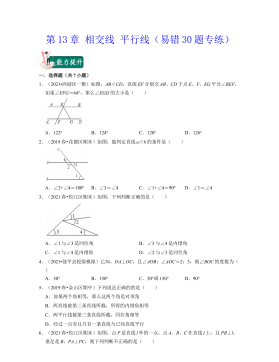
 2024-10-14 25
2024-10-14 25 -
七年级数学下册(易错30题专练)(沪教版)-第13章 相交线 平行线(解析版)VIP免费
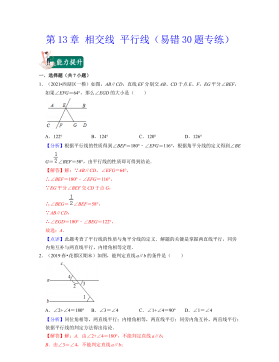
 2024-10-14 28
2024-10-14 28 -
七年级数学下册(易错30题专练)(沪教版)-第12章 实数(原卷版)VIP免费
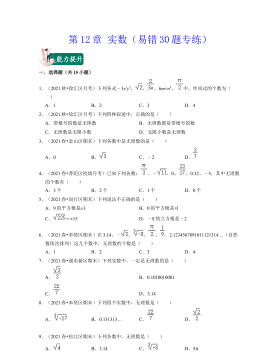
 2024-10-14 25
2024-10-14 25 -
七年级数学下册(易错30题专练)(沪教版)-第12章 实数(解析版)VIP免费
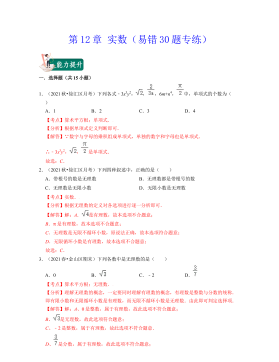
 2024-10-14 19
2024-10-14 19 -
七年级数学下册(压轴30题专练)(沪教版)-第15章平面直角坐标系(原卷版)VIP免费
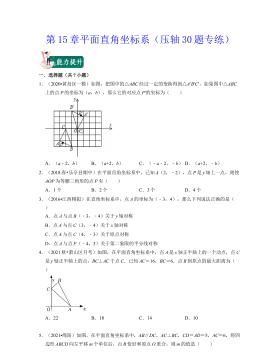
 2024-10-14 18
2024-10-14 18 -
七年级数学下册(压轴30题专练)(沪教版)-第15章平面直角坐标系(解析版)VIP免费

 2024-10-14 27
2024-10-14 27 -
七年级数学下册(压轴30题专练)(沪教版)-第14章三角形(原卷版)VIP免费

 2024-10-14 18
2024-10-14 18 -
七年级数学下册(压轴30题专练)(沪教版)-第14章三角形(解析版)VIP免费

 2024-10-14 30
2024-10-14 30 -
七年级数学下册(压轴30题专练)(沪教版)-第13章 相交线 平行线(原卷版)VIP免费
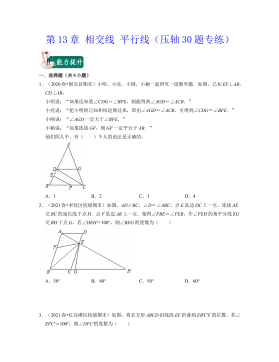
 2024-10-14 25
2024-10-14 25 -
七年级数学下册(压轴30题专练)(沪教版)-第13章 相交线 平行线(解析版)VIP免费
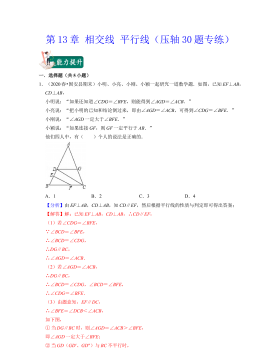
 2024-10-14 22
2024-10-14 22
作者:侯斌
分类:高等教育资料
价格:15积分
属性:128 页
大小:10.71MB
格式:PDF
时间:2025-01-09
相关内容
-

七年级数学下册(压轴30题专练)(沪教版)-第15章平面直角坐标系(原卷版)
分类:中小学教育资料
时间:2024-10-14
标签:无
格式:DOCX
价格:15 积分
-

七年级数学下册(压轴30题专练)(沪教版)-第15章平面直角坐标系(解析版)
分类:中小学教育资料
时间:2024-10-14
标签:无
格式:DOCX
价格:15 积分
-

七年级数学下册(压轴30题专练)(沪教版)-第14章三角形(原卷版)
分类:中小学教育资料
时间:2024-10-14
标签:无
格式:DOCX
价格:15 积分
-

七年级数学下册(压轴30题专练)(沪教版)-第14章三角形(解析版)
分类:中小学教育资料
时间:2024-10-14
标签:无
格式:DOCX
价格:15 积分
-

七年级数学下册(压轴30题专练)(沪教版)-第13章 相交线 平行线(原卷版)
分类:中小学教育资料
时间:2024-10-14
标签:无
格式:DOCX
价格:15 积分


